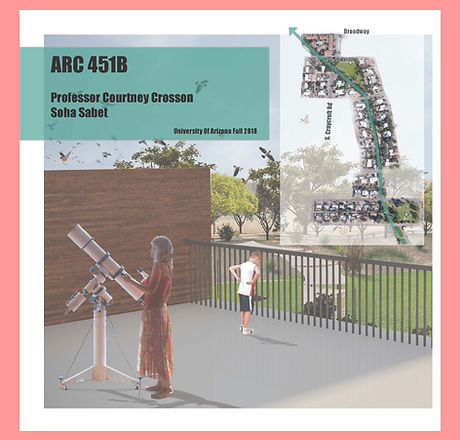BOOKLETS
Spring 2020 | Adaptive Streets
The Palo Verde - Camino Miramonte path is a proposed bike boulevard that bisects the pre-existing bike loop around Tucson. The University of Arizona, under Professor Courtney Crosson, worked with the Tucson Department of Transportation and Mobility (DTM) and Pima Country Flood Control to envision a design strategy along the boulevard that helps to mitigate flood concerns and helps establish a “complete streets” culture that encourages the use of bikes and pedestrian use along its entire length. Split into groups, the students broke the boulevard into 6 unique sites that were developed over the course of an entire academic semester. Each site worked with DTM and Pima County Flood Control as well as the local neighborhood associations to develop a boulevard that met these goals and helped to establish a sense of place for the neighborhoods that use them.

Tucson Adaptive Streets: Designing for Mobility, Water, and Community
students: Aaron Beringson, Garrett Dunn, Findley Fitzpatrick, Iliana Aguilar, Bryanna Chavez, Nathan Dysko, Mary Henderson, Eugene Lee, Nera Minton, Estanislao Soto, Hannah McCormick, Bradley Pinski, and Cynthia Yepiz | professor: Courtney Crosson
Fall 2019 | Pima Water Urbanism III
Fall 2018 | Pima Water Urbanism II
The projects in this studio (ARCH 451b | studio Crosson) were produced in collaboration with the City of Tucson and Pima County Flood Control District. The purpose of the project is to test the potential for mitigating flooding and providing other benefits to neighborhoods in the Christmas Wash, Alamo Wash, Airport Wash, and Ruthrauff Basin watersheds through the design of a series of green infrastructure multi-use basins. Conceptual designs for these basins were prepared by student pairs. The project is intended to provide generalized community input to the City and District as they evaluate options for multi-benefit flood mitigation projects to serve these communities.
























